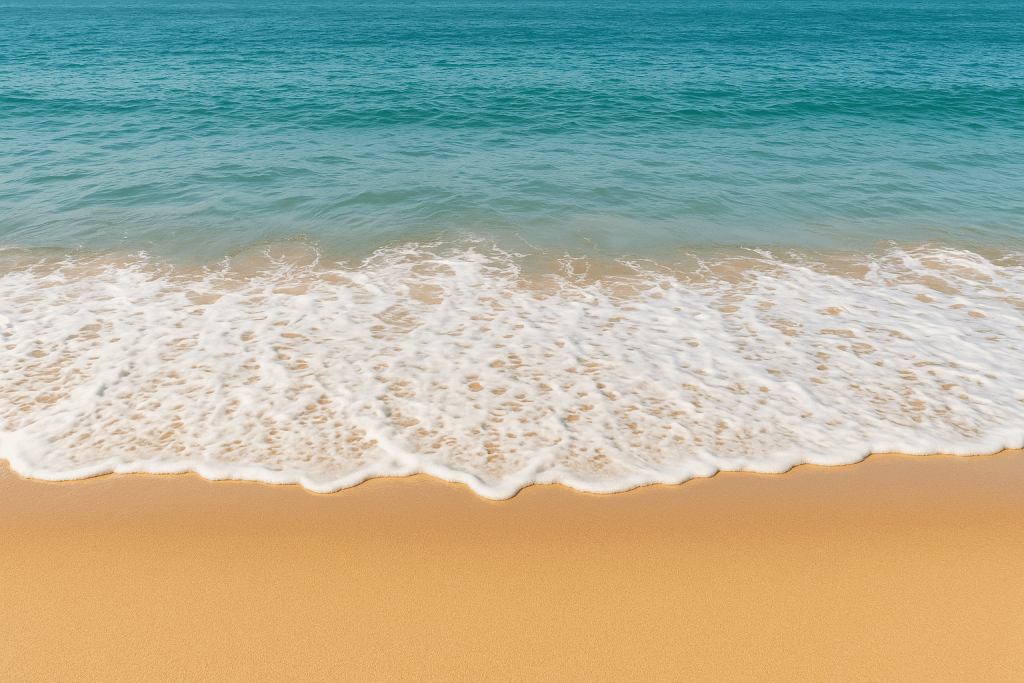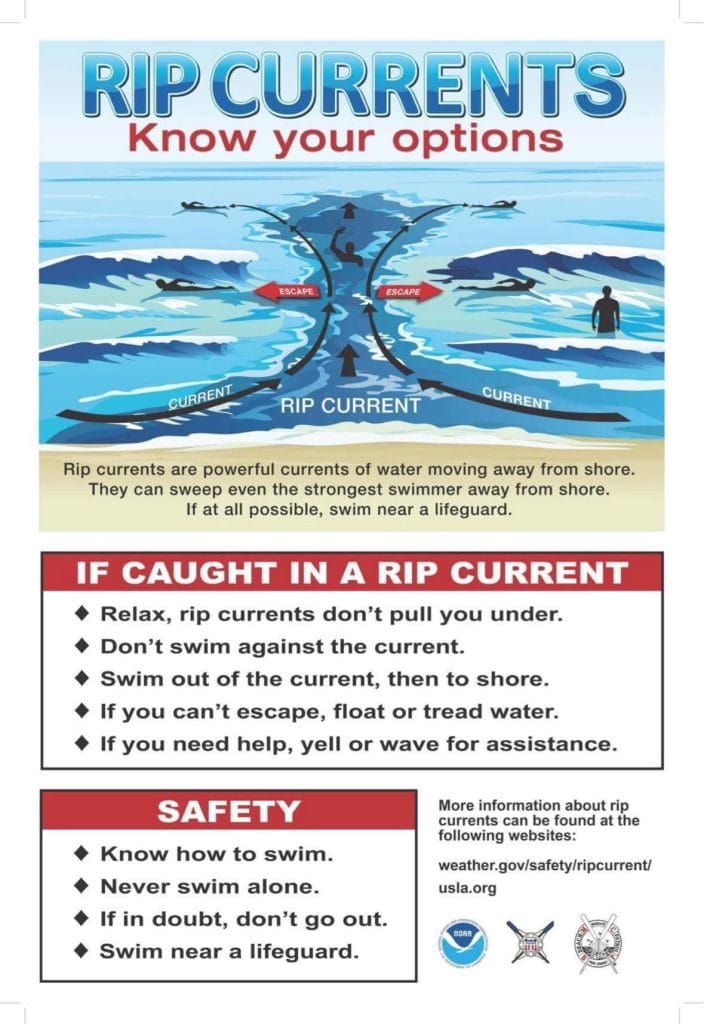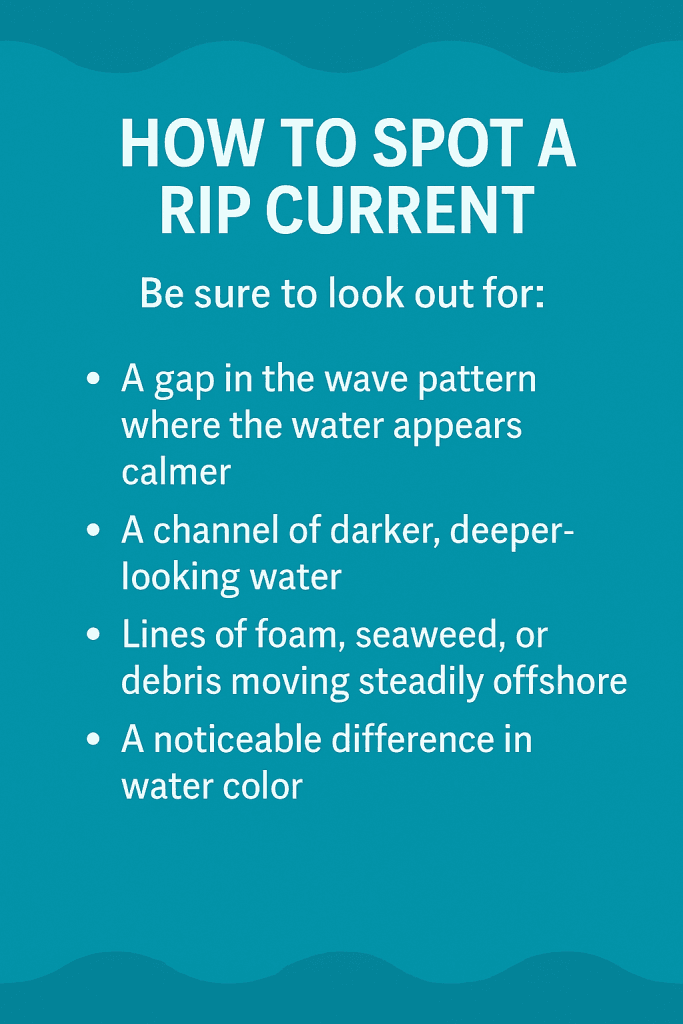Your cart is currently empty!

🌊 Rip Current Safety at the Jersey Shore: What You Need to Know Right Now
If you’re heading to the beach, here’s what to keep in mind so you can identify a rip current and stay safe and enjoy your day by the ocean. After all, a little preparation can go a long way toward preventing accidents and keeping the fun going.
🌊 Rip Current Safety at the Jersey Shore
If you’re heading to the beach, here’s what you need to know to stay safe and enjoy your day by the ocean.
What Are Rip Currents?
A rip current is a strong, narrow stream of water that rapidly flows away from the shore. These currents can develop on any beach with breaking waves, and as a result, they can drag swimmers into deep water more quickly than even an Olympic athlete can swim. Therefore, they pose a significant danger, particularly to those unfamiliar with how to respond in the moment.
Importantly, rip currents are not “underwater whirlpools” as some myths claim. Instead, they are powerful, fast-flowing channels of water, and because of this, they can quickly lead to panic and exhaustion if you attempt to swim directly against them. For this reason, knowing how to respond is essential.

How to Spot a Rip Current
Fortunately, several visual cues can help you spot a rip current before you decide to enter the water. For example, you should look out for:
- First, a gap in the wave pattern where the water appears calmer than the surrounding surf
- Next, a channel of darker, deeper-looking water
- In addition, lines of foam, seaweed, or debris moving steadily offshore
- Finally, a noticeable difference in water color compared to the surrounding areas
If you notice any of these signs, avoid swimming in that area and instead, alert others nearby so they can stay safe as well.

Safety Tips for Swimming in Rip Current Conditions
To help ensure a safer and more enjoyable experience at the ocean, please follow these important guidelines. By doing so, you can reduce risks and stay confident in the water.
1. Swim Near Lifeguards
Always choose a guarded beach. This is important because lifeguards are trained to identify rip currents and adjust swim zones to ensure the safety of all beachgoers. In many cases, they can spot danger before it becomes a problem.
2. Never Swim Alone
The buddy system isn’t just for kids—in fact, having a partner close by can be crucial in an emergency. Additionally, it makes your swim more enjoyable and secure.
3. Know What to Do If You’re Caught
- First, stay calm and avoid fighting the current.
- Next, let it carry you out a short distance to avoid exhaustion.
- Then, swim parallel to the shoreline until you’re free of the current.
- Finally, swim back toward shore at an angle to conserve energy.
4. Avoid Swimming Near Jetties or Piers
Because rip currents often form alongside these structures, they can be particularly hazardous in those areas. As a result, steering clear is the safest choice.
5. Stay Within Your Comfort Zone
If you’re not a strong swimmer, remain where the water is waist-deep or shallower, especially during high-risk days. That way, you can still enjoy the ocean while minimizing danger.
Key Resources for Rip Current Safety
For more in-depth guidance, these organizations offer excellent tips and educational materials. By reviewing them, you can deepen your understanding and share valuable information with others:
- NJ Sea Grant Consortium – Safety guides, bilingual signs, and the Sharks vs. Rip Currents educational game. Their motto: “When in doubt, don’t go out!”
👉 njseagrant.org/ripcurrents - National Weather Service (NWS) – Daily surf and rip current forecasts, plus safety infographics.
👉 weather.gov/safety/ripcurrent - U.S. Lifesaving Association (USLA) – Practical advice from professional lifeguards nationwide.
👉 usla.org/ripcurrents - Time Magazine’s Guide – A quick, practical read on how to survive a rip current.
👉 Read here
Final Word
The Jersey Shore offers some of the best summer memories, from early morning swims to golden sunset walks. Nevertheless, safety must always come first. By learning to recognize rip currents, swimming near lifeguards, and knowing how to react if you’re caught, you can make the most of your beach days with peace of mind.
Ultimately, respecting the ocean is the key to enjoying it. So, pack your sunscreen, keep your eyes on the water, and remember: Respect the ocean, and it will respect you back. 🏖️🌊

Leave a Reply
You must be logged in to post a comment.